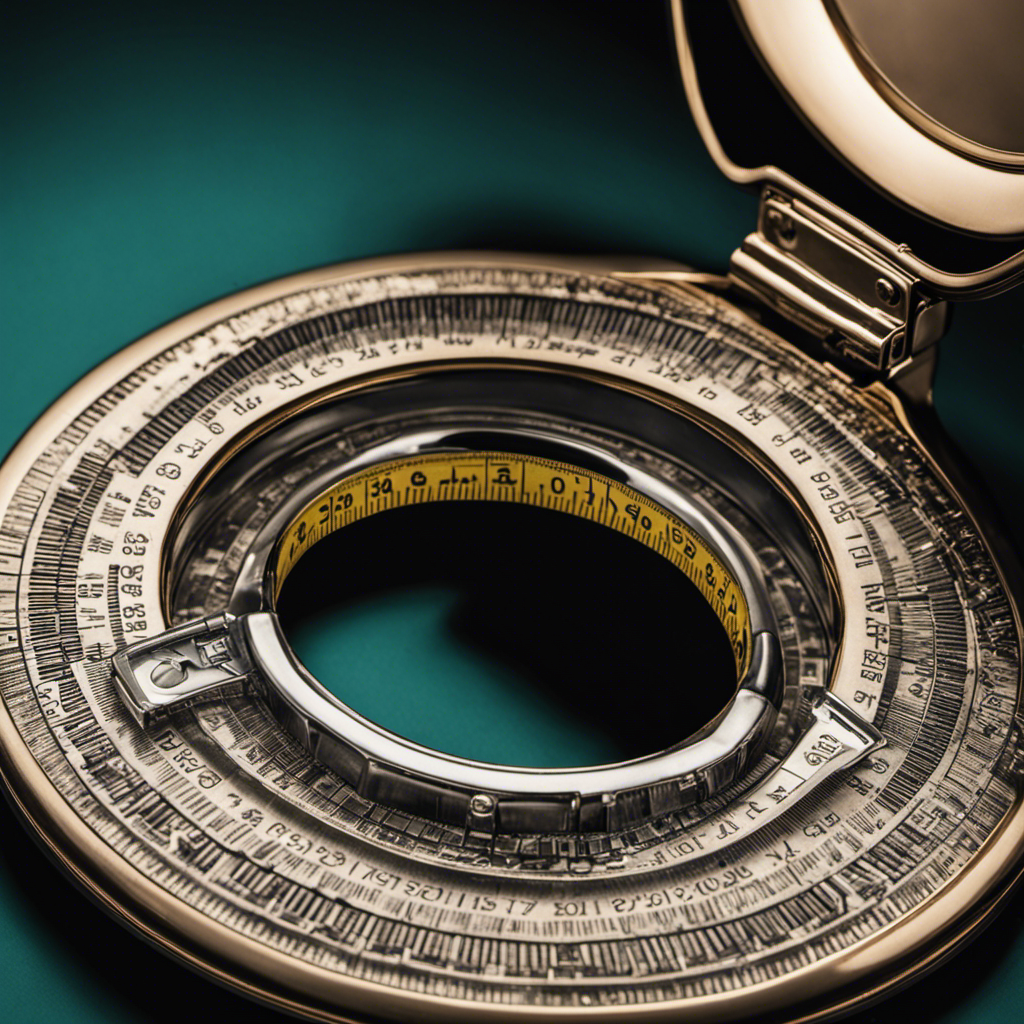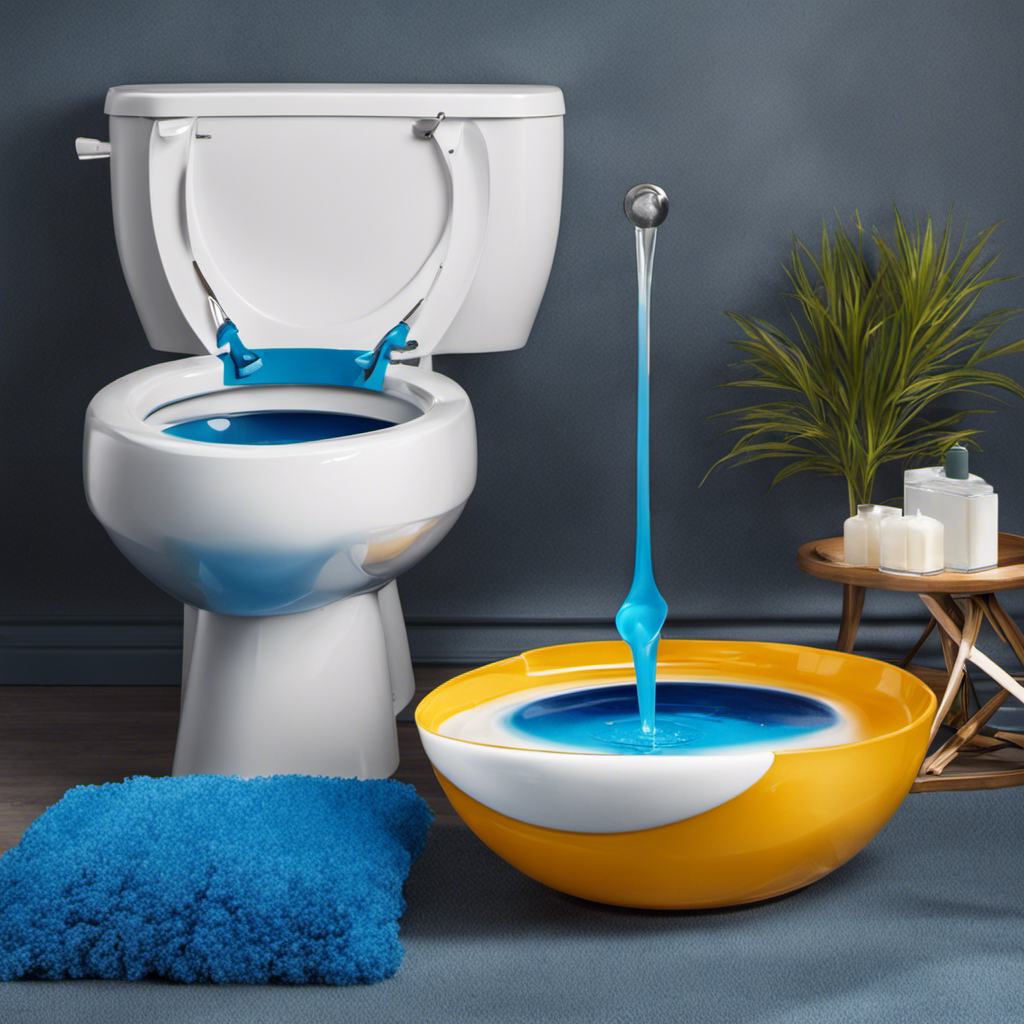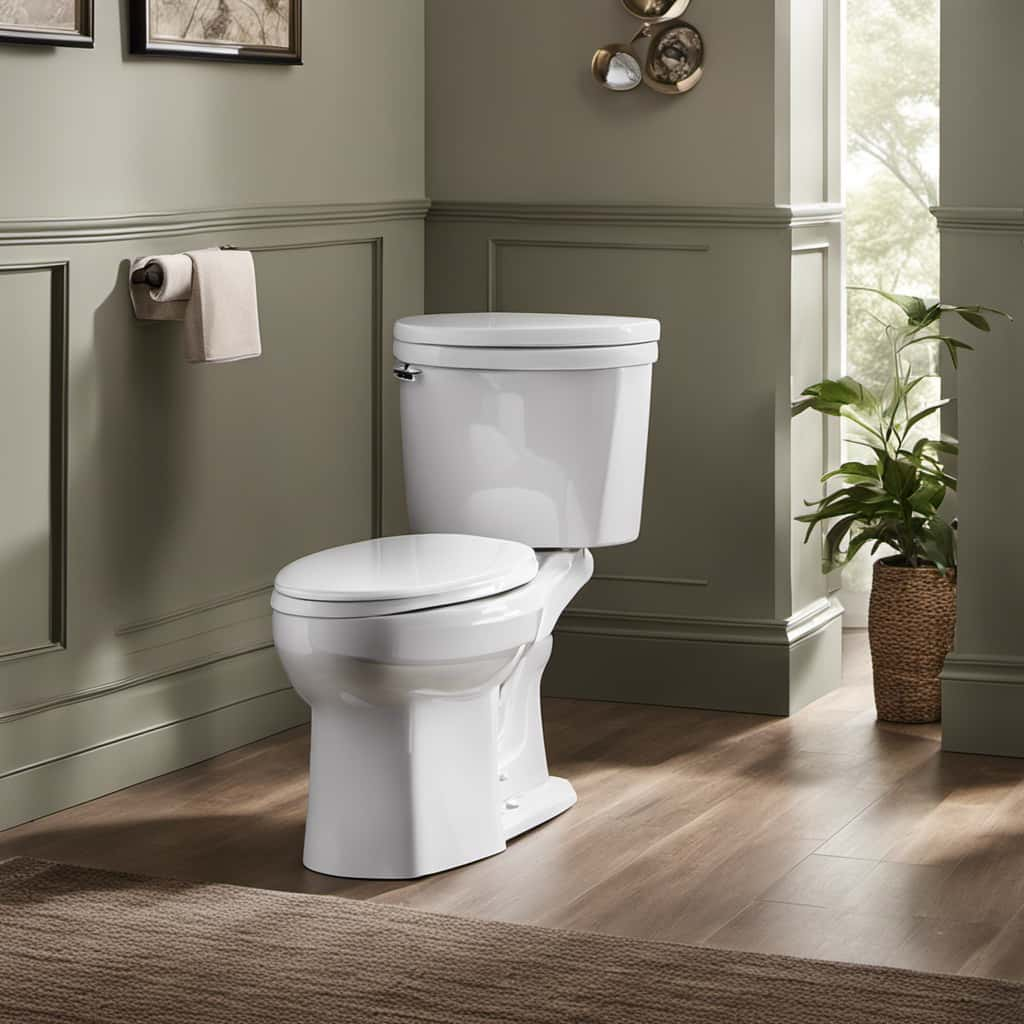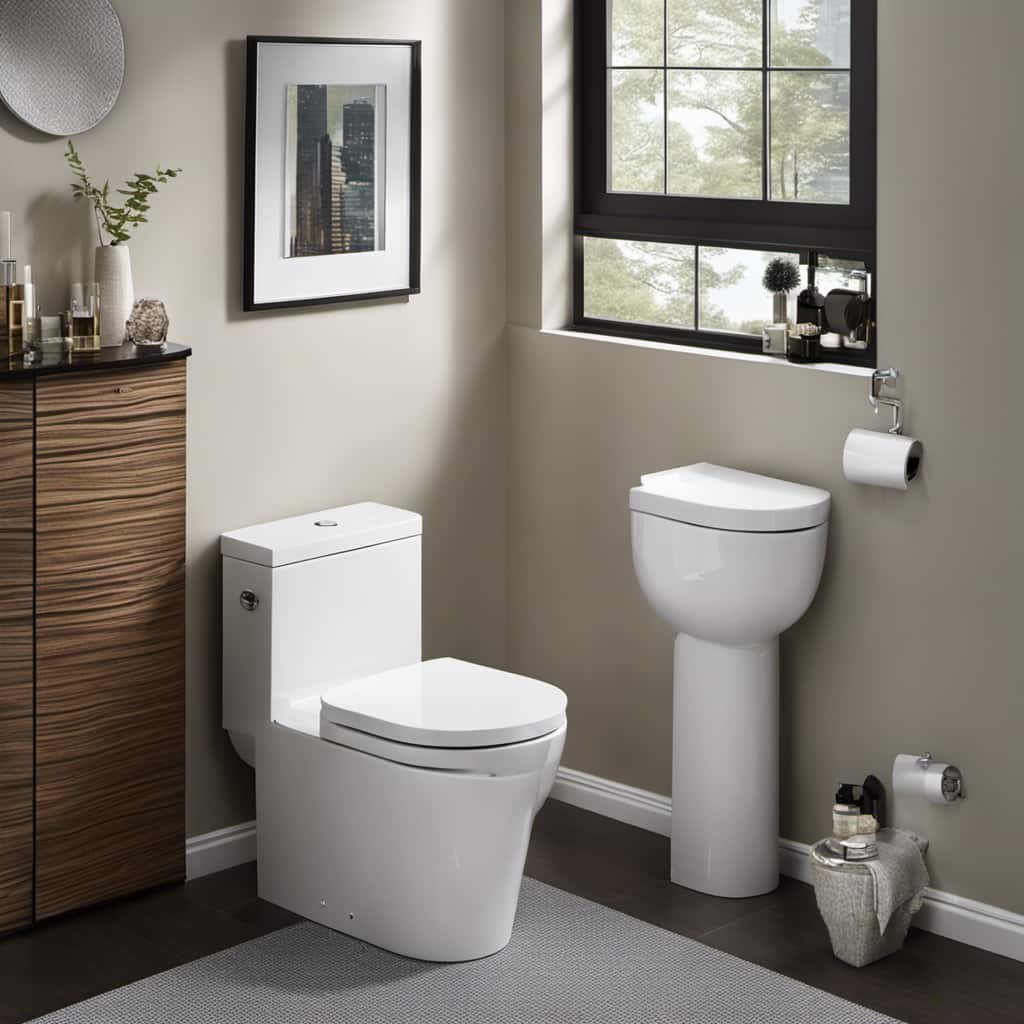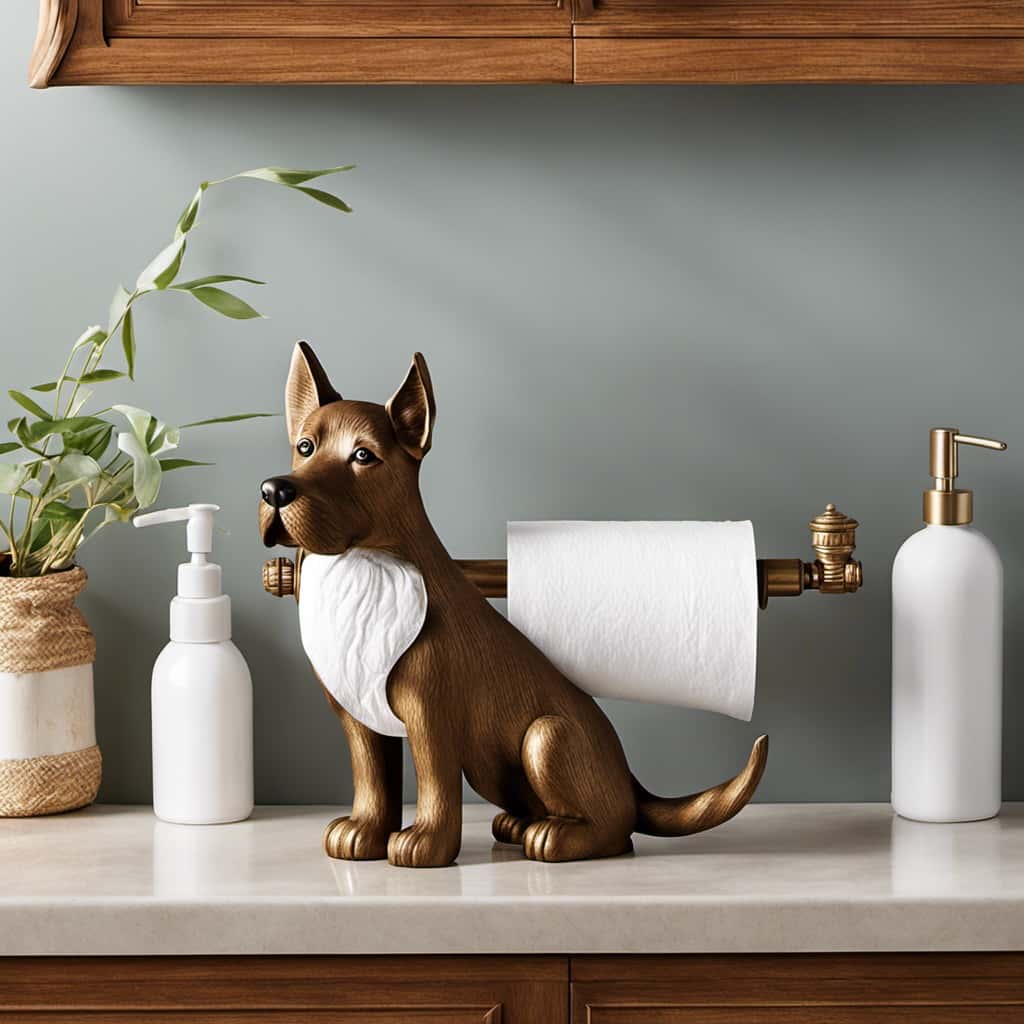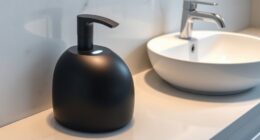I’ve got a secret to share with you. It’s a simple, yet essential skill that every homeowner should know: how to unplug a toilet.
We’ve all been there, facing the dreaded clog that threatens to ruin our day. But fear not, because in this article, I’m going to guide you step-by-step through the process of unclogging your toilet.
With just a few tools and a little know-how, you’ll be able to tackle even the most stubborn clogs and prevent future disasters.
So, let’s dive in and conquer the toilet clog once and for all.
Key Takeaways
- The symptoms of a clogged toilet include rising water level and slow or no drainage.
- Excessive toilet paper, foreign objects, and blocked sewer lines are potential causes of a toilet clog.
- It is important to determine if the issue is isolated to one toilet or if it affects multiple fixtures.
- Essential tools for unclogging a toilet include a plunger and a bucket, and alternative DIY methods include using baking soda and vinegar or a toilet snake.
Understanding the Problem
First, you need to figure out what is causing the toilet to clog. Understanding the problem is crucial in order to effectively troubleshoot and fix it. Start by observing the symptoms. Is the water level rising? Is the water draining slowly or not at all? These clues can help identify the underlying issue.
Next, consider potential causes such as excessive toilet paper, foreign objects, or a blocked sewer line. If the clog is limited to one toilet, it is likely an isolated problem. However, if multiple fixtures are affected, it may indicate a more significant issue.
To further troubleshoot, try using a plunger or a toilet auger. If these techniques fail, it may be necessary to call a professional plumber. Understanding the problem is the first step towards successfully unclogging a toilet.
To proceed with fixing the clog, you will need a few tools and materials.
Tools and Materials Needed
To tackle this task, you’ll need a plunger and a bucket.
Unclogging a toilet can be a messy and frustrating job, but with the right tools and techniques, you can quickly resolve the issue.
Before diving in, it’s important to recognize the common signs of a toilet clog. These include water rising to the brim when you flush, slow draining, or a gurgling sound coming from the pipes.
Now, let’s talk about some toilet unclogging hacks. One useful hack is to add hot water to the bowl, as the heat can help break up the clog. Another hack is to use dish soap, which can act as a lubricant and help the clog slide down the drain.
By incorporating these hacks and following the basic steps for unclogging a toilet, you’ll be able to tackle the problem effectively.
[Transition]Now that we have the tools and materials ready, let’s move on to the basic steps for unclogging a toilet.
Basic Steps for Unclogging a Toilet
When it comes to unclogging a toilet, there are a few key points to keep in mind. First, using the right plunger technique can make all the difference. I’ll walk you through the step-by-step process of using a plunger effectively.
If the plunger doesn’t do the trick, don’t worry – there are alternative DIY methods that you can try before calling a plumber. Let’s explore these options together.
However, if all else fails and you’re still dealing with a stubborn clog, it might be time to call in the professionals. I’ll discuss when it’s best to reach out to a plumber for help.
Plunger Techniques for Unclogging
A good technique for unclogging a toilet is using a plunger. This method is simple and effective, and it can save you time and money compared to calling professional plumbing services.
To begin, make sure you have a plunger specifically designed for toilets, as it has a flange that creates a better seal. Next, use toilet bowl cleaners to remove any obstructions or buildup in the toilet.
Once you’ve done that, place the plunger over the drain hole, making sure it covers it completely. Then, push down gently and pull up forcefully, creating suction to dislodge the clog. Repeat this motion several times until the water starts to drain.
If the plunger technique doesn’t work, don’t worry! There are alternative DIY methods you can try.
Alternative DIY Methods
If the plunger doesn’t work, try using a mixture of baking soda and vinegar to unclog your toilet. Here’s a step-by-step guide on how to do it:
-
Gather your materials: You will need baking soda, vinegar, and a toilet snake.
-
Start by pouring one cup of baking soda into the toilet bowl.
-
Next, pour two cups of vinegar into the bowl. The mixture will start to bubble and fizz.
-
Let the mixture sit for about 30 minutes to an hour. This will allow it to break down the clog.
-
After the waiting period, use a toilet snake to break up any remaining clog. Insert the snake into the toilet drain and twist it clockwise.
-
Flush the toilet to see if the clog has been cleared. If not, repeat the process or consider calling a plumber.
Using this mixture of baking soda and vinegar, along with a toilet snake, can be an effective way to unclog your toilet without the need for harsh chemicals or professional help.
When to Call Plumber
Sometimes, it’s best to contact a plumber when experiencing persistent clogs in your toilet. While there are DIY methods to try, certain signs indicate a serious clog that requires professional assistance. Here’s a step-by-step guide to help you determine when to DIY and when to call a plumber:
| Signs of a Serious Clog |
|---|
| Water rising in the bowl |
| Multiple fixtures clogging simultaneously |
| Foul odor coming from drains |
If you notice any of these signs, it’s crucial to contact a plumber promptly. These indicators suggest a more significant issue in your plumbing system that may require specialized tools and expertise. Attempting to fix a serious clog on your own can worsen the problem and lead to costly repairs. Don’t hesitate to reach out to a professional plumber who can diagnose the issue accurately and provide the necessary solutions.
Dealing With Stubborn Clogs
To deal with stubborn clogs, you can try using a plunger or a plumbing snake. Here’s a step-by-step guide on how to unclog your toilet:
-
Start with a plunger: Position the plunger directly over the drain hole and firmly push it down. Then, quickly pull up to create suction. Repeat this motion several times until the water starts to drain.
-
Use a plumbing snake: If plunging doesn’t work, try using a plumbing snake. Insert the snake into the drain hole and rotate it clockwise while pushing it forward. Keep going until you feel resistance. Once you’ve reached the clog, twist and push until it breaks apart.
-
Consider professional unclogging services: If your attempts don’t work, it may be time to call a professional. They have the expertise and tools to tackle tough clogs effectively.
Preventing Future Toilet Clogs
Now that you know how to deal with stubborn clogs, let’s talk about preventing future toilet clogs.
Regular toilet maintenance can go a long way in keeping your toilet running smoothly. Here are some steps you can take:
-
Use less toilet paper: Excessive toilet paper can easily cause clogs. Be mindful of how much you use.
-
Avoid flushing non-flushable items: Items like wipes, sanitary products, or paper towels should never be flushed down the toilet. Dispose of them properly in a waste bin.
-
Install a toilet paper holder with a built-in shelf: This prevents the toilet paper from falling into the bowl and causing a clog.
-
Conduct regular inspections: Check the toilet for any signs of leaks or cracks. Addressing these issues early can prevent future clogs.
By following these steps and practicing proper toilet maintenance, you can reduce the chances of experiencing clogs in the future.
Now, let’s move on to troubleshooting common issues.
Troubleshooting Common Issues
When it comes to dealing with a clogged toilet, there are several key points to consider.
First, understanding the causes of a clogged toilet can help prevent future issues.
Second, mastering the proper toilet plunging techniques can be incredibly useful in clearing the blockage.
And finally, exploring alternative unclogging methods can provide additional options for resolving the problem.
Clogged Toilet Causes
If your toilet keeps getting clogged, it’s likely due to items that shouldn’t be flushed down the toilet, such as excessive toilet paper or non-flushable objects. Understanding the causes of a clogged toilet can help you troubleshoot the issue more effectively. Here are some common causes to be aware of:
-
Excessive toilet paper: Flushing too much toilet paper at once can overwhelm your plumbing system and cause a clog.
-
Non-flushable objects: Items like wipes, feminine hygiene products, and paper towels should never be flushed down the toilet as they can easily cause blockages.
-
Low water pressure: If you have low water pressure, it may not be strong enough to push waste through the pipes, leading to frequent clogs.
Toilet Plunging Techniques
To effectively plunge your toilet, make sure you have a plunger with a flange, position it over the drain hole, and firmly push and pull the plunger to create suction and dislodge the clog. However, if you don’t have a plunger on hand or prefer to try alternative methods, there are a few options you can consider. One alternative is using a toilet auger, which is a long flexible rod with a corkscrew-like end that can be inserted into the toilet to break up the clog. Another option is using a mixture of hot water and dish soap to help loosen the blockage. Simply pour a generous amount of dish soap into the toilet bowl, followed by hot water, and let it sit for a few minutes before attempting to flush. Additionally, taking preventive measures can help avoid future toilet clogs. Avoid flushing excessive amounts of toilet paper or non-flushable items, and consider using a toilet paper specifically designed to break down easily. Regularly cleaning your toilet and ensuring proper water flow can also help prevent clogs.
| Toilet Plunging Alternatives | Preventing Toilet Clogs |
|---|---|
| Toilet Auger | Use toilet paper designed to break down easily |
| Hot water and dish soap | Avoid flushing excessive amounts of toilet paper or non-flushable items |
| Regularly clean your toilet and ensure proper water flow |
Alternative Unclogging Methods
After trying various plunging techniques, I realized that sometimes a stubborn clog requires alternative unclogging methods. Here are a few chemical solutions and natural remedies that might come in handy:
-
Chemical Solutions:
- Pouring a mixture of hot water and dish soap down the toilet can help break down the clog.
- Using a toilet bowl cleaner that contains chemicals like sodium hydroxide or sulfuric acid can dissolve the blockage.
- If the clog persists, you can try using a drain auger or snake to physically remove the obstruction.
-
Natural Remedies:
- Baking soda and vinegar can create a chemical reaction that helps dislodge the clog.
- Boiling water can be poured into the toilet to soften the blockage.
- A mixture of borax and lemon juice can also break down the clog naturally.
Remember to exercise caution when using chemical solutions and always follow the instructions on the packaging. If the clog persists or worsens, it is best to call a professional plumber for assistance.
Frequently Asked Questions
Can I Use a Plunger to Unclog a Toilet?
Yes, you can use a plunger to unclog a toilet. However, there are alternative methods you can try if the plunger doesn’t work. It’s important to avoid common mistakes like using too much force.
How Can I Tell if the Toilet Is Clogged or if There Is a Problem With the Plumbing?
Toilet clogs can be easily prevented with regular maintenance. Signs of a clogged toilet include water backing up or slow draining. If these occur, it may indicate a problem with the plumbing that needs professional attention.
What Should I Do if the Water Level in the Toilet Bowl Is Rising?
If the water level in the toilet bowl is rising, I immediately turn off the water supply valve behind the toilet. Then, I grab a plunger and use it to try and unclog the toilet. If that doesn’t work, I call a plumber.
Is It Safe to Use Chemical Drain Cleaners to Unclog a Toilet?
Using chemical drain cleaners to unclog a toilet is not safe due to their toxicity. Instead, try using alternative methods such as a plunger or a toilet auger to effectively unclog the toilet.
How Often Should I Clean My Toilet to Prevent Future Clogs?
To prevent future clogs, it’s important to clean your toilet regularly. I find that cleaning it once a week works best for me. Using a toilet brush and a mild cleaner, scrub the bowl and flush away any debris.
Conclusion
So there you have it, folks! Now you know how to unplug a toilet like a pro.
Remember, if you ever find yourself in this stinky situation, stay calm and follow the steps I’ve outlined.
Grab your trusty plunger, use some elbow grease, and you’ll have that toilet flowing smoothly in no time.
And don’t forget to give yourself a pat on the back for a job well done!
Now go forth and conquer those clogs, my fellow bathroom warriors.
Happy unclogging!

